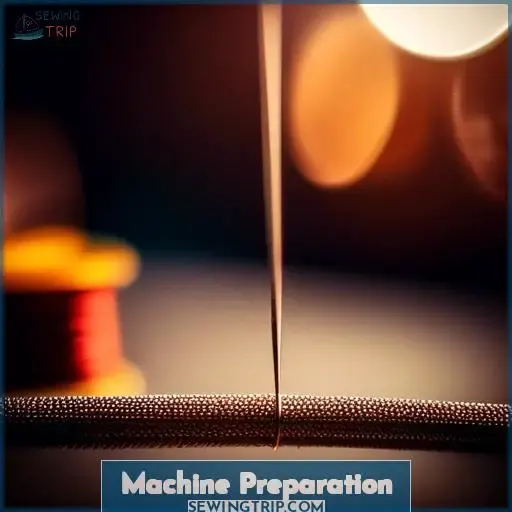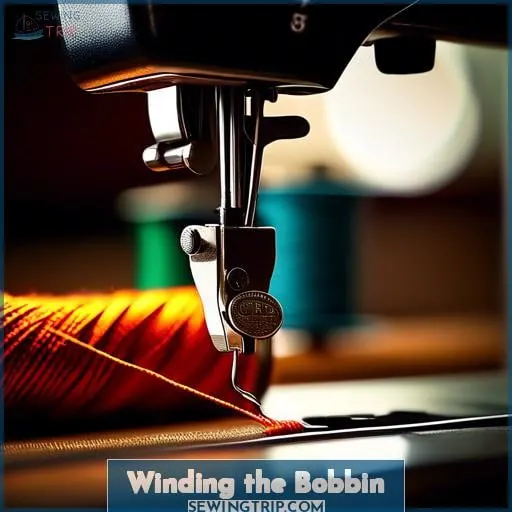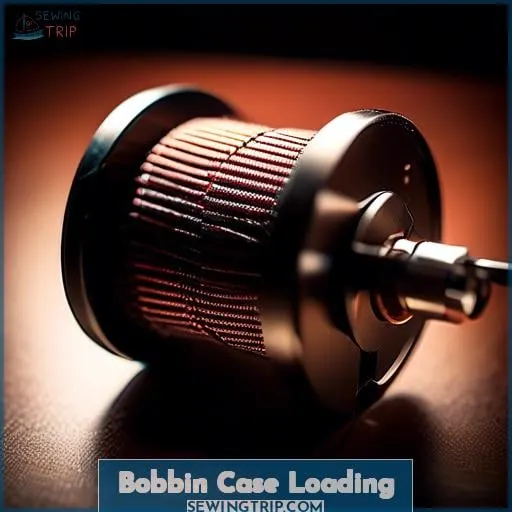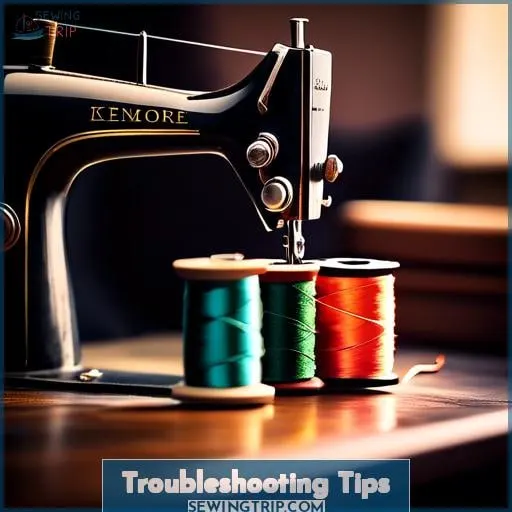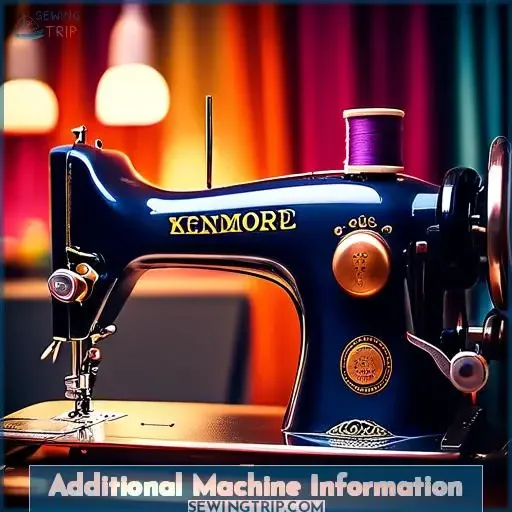This site is supported by our readers. We may earn a commission, at no cost to you, if you purchase through links.
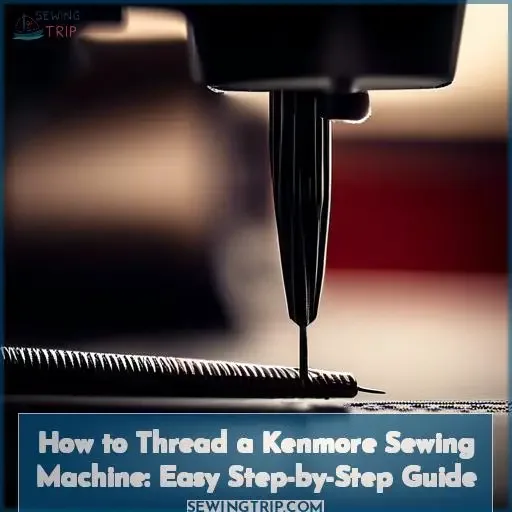 Threading a Kenmore sewing machine is not just a step in preparation; it’s the key to unlocking your creative potential. Before diving into your next project, you’ll need to master this fundamental skill.
Threading a Kenmore sewing machine is not just a step in preparation; it’s the key to unlocking your creative potential. Before diving into your next project, you’ll need to master this fundamental skill.
This guide will walk you through the process, from machine preparation to troubleshooting, ensuring your sewing journey is smooth sailing. Whether you’re dealing with a vintage model or a modern marvel, understanding how to thread your Kenmore sewing machine correctly is crucial for achieving those perfect stitches.
Let’s thread the needle together and set the stage for your sewing success.
Yes, threading a Kenmore sewing machine involves winding the bobbin, then threading the main spool through the machine and needle, a process that is similar across different models.
Table Of Contents
Key Takeaways
- Ensure the thread unwinds counterclockwise from the spool and is properly guided through the tension mechanisms and thread guides specific to your Kenmore model, as threading paths may vary slightly between models.
- Properly winding the bobbin involves engaging the machine, monitoring thread tension, and clipping the thread close to the bobbin after winding, ensuring the bobbin is correctly seated and tensioned for optimal performance.
- Loading the bobbin case correctly is crucial, involving orienting the bobbin correctly, guiding the thread through the designated slot, and ensuring even thread tension to prevent issues during sewing.
- Regular maintenance, such as cleaning the bobbin case to prevent lint buildup and adjusting thread tensions, is essential for consistent stitch quality and preventing common issues like thread looping or breaking.
Machine Preparation
Before you begin sewing with your Kenmore machine, it’s crucial to set it up correctly.
Start by turning the clutch knob counter-clockwise to release it, ensuring that the machine’s mechanisms are ready to accept the thread.
Next, place your spool of thread onto the spool pin, paying attention to the direction of the thread to avoid any snags or tension issues as you sew.
Release Clutch Knob
Before threading your Kenmore sewing machine, you’ll need to prepare it by releasing the clutch knob. To do this, turn the knob counter-clockwise with respect to the machine. This step is crucial as it disengages the needle mechanism, allowing the bobbin to wind without the needle moving.
The clutch knob’s location is typically on the handwheel side of your Kenmore sewing machine. Its function is to control the transition between sewing and bobbin winding modes. There are various clutch knob types, and maintenance may involve ensuring it turns smoothly without resistance.
If you encounter issues with the clutch knob, such as it being stuck or not engaging properly, it may require replacement. Remember, the clutch knob plays a pivotal role in managing the bottom thread tension and is integral to the threading process.
Spool Placement
After releasing the clutch knob, the next step in preparing your Kenmore sewing machine involves correctly positioning the spool of thread.
You’ll want to place the spool on the spool pin, ensuring that the thread unwinds in a counter-clockwise direction from the back of the spool. This orientation is crucial for most Kenmore models, although it’s worth noting that some models may feature a horizontal spool pin instead of the typical vertical one.
Proper spool placement is essential for smooth threading and to prevent any unnecessary tension or tangling as the thread moves through the machine’s threading path. When considering spool pin alignment, it’s important to ensure thread type compatibility, as different threads may require different tension adjustments.
Be mindful of spool size restrictions; larger spools may necessitate the use of a thread stand. Regular spool holder maintenance can prevent issues and extend the life of your machine.
Winding the Bobbin
Winding the bobbin on your Kenmore sewing machine is a crucial step in preparing for any sewing project. You’ll start by engaging the machine and pressing the foot pedal, allowing the bobbin to wind until it automatically stops.
This process ensures your bobbin is evenly filled with thread, ready for insertion into the machine. Remember to clip the thread and re-engage the clutch before removing the bobbin, leaving a small tail of thread for easy installation into the bobbin case.
This step sets the foundation for smooth sewing operations, highlighting the importance of precision and attention to detail in machine setup.
Start Machine and Wind
Once you’ve properly placed the spool of thread and prepared the bobbin, you’re ready to wind it.
Ensure the bobbin winding speed is consistent for even thread distribution. Monitor the bobbin thread tension, adjusting as necessary for optimal performance.
After winding, practice regular bobbin case maintenance and heed bobbin storage tips to prolong thread life.
Clipping and Tightening
Continuing from the initial steps of winding the bobbin, you’ll now need to clip the thread from the spool once a sufficient amount of thread is wound around the bobbin.
- Snip the thread close to the bobbin, mindful of the bobbin winder safety.
- Firmly tighten the clutch knob, understanding its purpose in securing thread tension.
- Carefully remove the bobbin, ensuring the bobbin case latch functions smoothly and the spring tension is appropriate.
Bobbin Case Loading
When loading the bobbin case in your Kenmore sewing machine, it’s crucial to handle each step with precision to ensure smooth sewing.
You’ll start by releasing the bobbin case latch and pulling the case out straight. Make sure the bobbin is oriented correctly, with the thread winding clockwise, then insert it into the case, guiding the thread through the slot and under the tension spring.
Release and Remove Case
You’ll frequently need to remove the bobbin case from your Kenmore sewing machine to ensure your stitches are set correctly. This step is crucial for maintaining the right bobbin tension, which is key to achieving perfect stitches.
First, locate the latch on the bobbin case; this is your tool for releasing and removing the case with ease. Pay attention to the case’s orientation as you pull it out; this knowledge is essential when you reinsert it after cleaning or adjusting.
Speaking of cleaning, regular case cleaning prevents lint buildup, ensuring smoother operation. Also, remember that the type of thread you use can affect bobbin tension, so choose wisely based on your project’s requirements.
Bobbin Orientation and Insertion
Ensure the bobbin is correctly oriented with the thread unwinding clockwise before inserting it into the case.
Grasp the bobbin case latch firmly; this prevents accidental bobbin release during insertion.
Slide the bobbin into the case, ensuring the thread’s tension is even, not too loose or tight.
Regular bobbin case cleaning maintains optimal performance, preventing thread snags and ensuring smooth fabric feed.
Troubleshooting Tips
When threading your Kenmore sewing machine, it’s crucial to ensure that the bobbin is seated correctly and that you’re using the appropriate thread weight for your fabric.
If you encounter issues such as the bottom thread not coming up, the top thread breaking, or the fabric not feeding, these could be signs of tension problems, a need for machine servicing, or simply a misstep in threading.
It’s important to balance the needle tension with the bobbin tension for smooth stitches and to avoid puckering of the fabric. Regular cleaning and proper setup can prevent many common sewing machine issues.
Bobbin Seating and Thread Weight
When troubleshooting issues with your Kenmore sewing machine, it’s crucial to check that the bobbin is properly seated and you’re using the correct thread weight for your project.
Ensure the bobbin size and material match your machine’s specifications. Select a bobbin thread color that complements your fabric.
For optimal performance, practice diligent bobbin care and store bobbins in a controlled environment.
Tension and Feed Dog Issues
If your bobbin thread is looping, adjust your bobbin tension and clean your feed dogs.
Ensure the bobbin case latch is securely fastened for smooth operation.
For bunched bobbin thread, a tension spring adjustment might be necessary.
Regularly cleaning your feed dogs prevents buildup, ensuring flawless stitches.
Mastering these adjustments fosters innovation in your sewing projects, elevating your craft.
Additional Machine Information
In threading your Kenmore sewing machine, understanding the model specifics is crucial. You’ll need to familiarize yourself with how to properly insert the bobbin into its case.
Additionally, mastering the technique for turning the wheel is essential. This knowledge ensures your machine operates smoothly and your sewing projects turn out beautifully.
Kenmore Model Specifics
Continuing from the previous discussion on troubleshooting your Kenmore sewing machine, it’s important to note that specific models, such as the Kenmore 385 series, may have unique features and components.
You’ll need to familiarize yourself with these distinctions to ensure proper threading and maintenance. Recognize machine differences, including thread path variations and the bobbin case latch mechanism.
Master the needle thread clip and bobbin case removal for seamless sewing experiences.
Bobbin and Wheel Handling
Having covered the specifics of the Kenmore model, let’s now focus on how you’ll handle the bobbin and wheel, essential for smooth sewing operations.
Ensure bobbin alignment for consistent stitch quality. Adjust thread tension settings to match your fabric.
Regular bobbin case maintenance prevents snags and ensures longevity of your machine’s performance.
Frequently Asked Questions (FAQs)
How do I select the correct needle and thread type for different fabrics when using a Kenmore sewing machine?
To select the right needle and thread for various fabrics on a Kenmore sewing machine, match needle types—Universal, Ball-point, or Sharp—to fabric weave and weight.
Choose thread that complements fabric type, like polyester for synthetics.
Can I use twin or specialty needles with my Kenmore sewing machine, and if so, how do I set it up?
Yes, you can use twin or specialty needles on your Kenmore sewing machine.
To set it up, replace the single needle with the twin needle, ensuring it’s properly secured.
Then, thread each needle separately, following your machine’s threading guide for dual threads.
Adjust stitch settings as needed for twin needle sewing.
What are the best practices for maintaining my Kenmore sewing machine to ensure longevity and optimal performance?
Regularly clean and oil your Kenmore sewing machine.
Use quality synthetic lubricant.
Ensure proper tension and thread weight for optimal performance and longevity.
How do I sew stretchy or delicate fabrics with a Kenmore sewing machine without causing puckering or damage?
To sew stretchy or delicate fabrics on a Kenmore sewing machine without causing puckering or damage, follow these steps:
- Use a stretch or ballpoint needle.
- Set your machine to a stretch stitch or a slight zigzag stitch.
- Lower the presser foot tension.
- Use a walking foot or tissue paper underneath the fabric to prevent slipping.
- Test stitch settings on fabric scraps first to ensure smooth, even stitches.
Are there any specific techniques for sewing thick or multiple layers of fabric with a Kenmore sewing machine?
To sew thick or multiple layers on a Kenmore, consider the following adjustments:
- Use a denim needle.
- Increase stitch length.
- Reduce foot pressure.
For even feeding, you may want to consider using a walking foot. Additionally, to level the presser foot over seams, a jean-a-ma-jig or hump jumper can be helpful.
Conclusion
Mastering the meticulous method of threading your Kenmore sewing machine sets the stage for seamless stitching.
With your bobbin wound and seated, and the thread smoothly sailing through the machine’s pathways, you’re ready to embark on your sewing endeavors.

